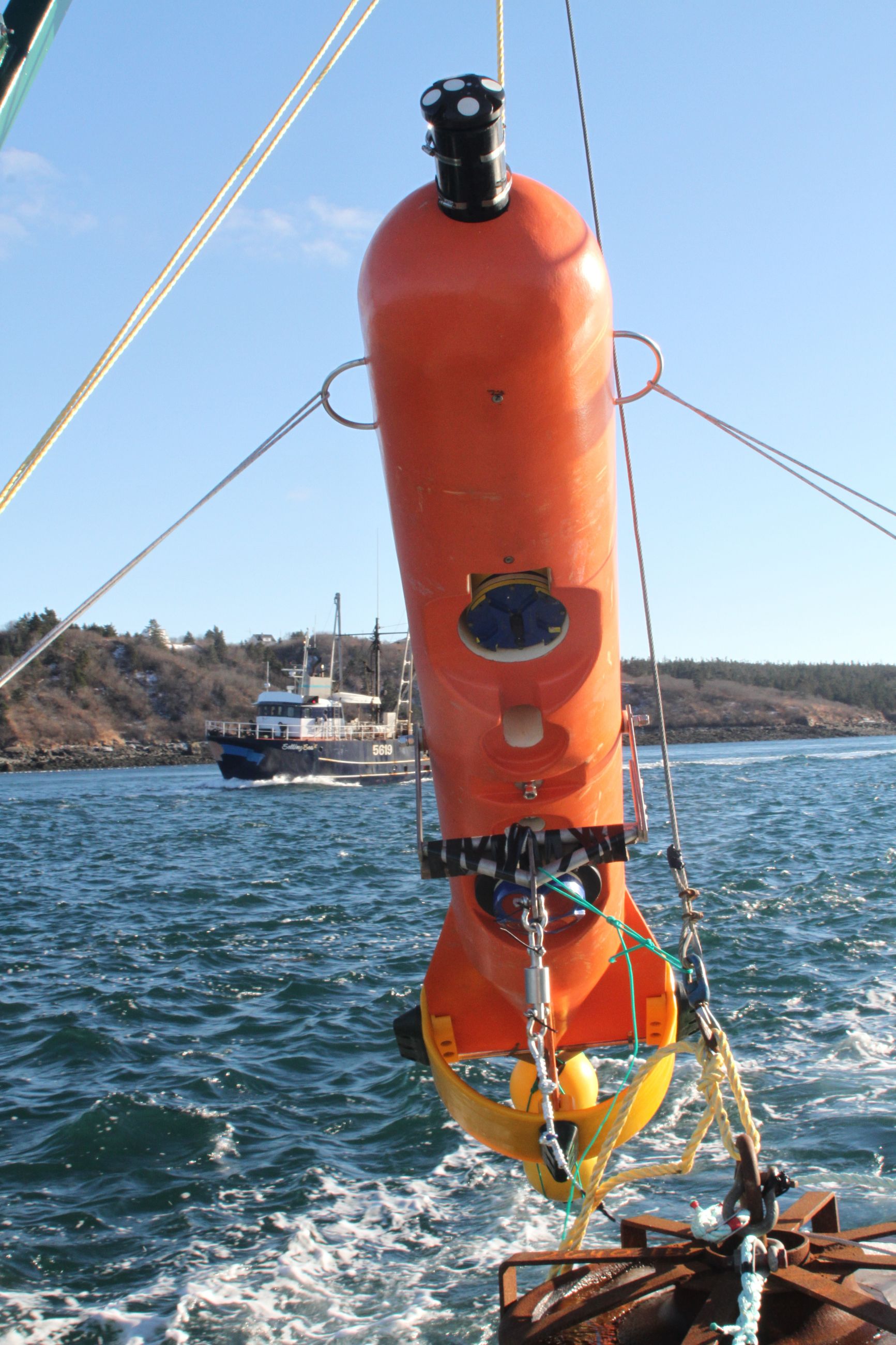Reducing the cost of in-stream tidal energy generation through comprehensive hydrodynamic site assessment
Lead Proponent: Acadia University
Location: Nova Scotia
ecoEII Contribution: $ 1,978,000
Project Total: $ 3,770,000
Project Background
In 2012, the Canadian Marine Renewable Energy Technology Roadmap set ambitious goals for the Canadian tidal energy industry that required Canadian developers and researchers to demonstrate commercial-scale projects, approaches and expertise in the decade following the report’s release. At the same time, the Province of Nova Scotia was introducing a Community Feed-in-Tariff (COMFIT) program that would support the development of community-owned tidal energy projects. Both initiatives recognized that to accelerate commercialization of tidal energy, the cost per kilowatt hour of tidal energy had to be reduced through experiential learning and technological advances. To that end, Acadia University developed the project “Reducing the cost of in-stream tidal energy generation through comprehensive hydrodynamic site assessment”. The Project was awarded $1,978K from ecoEII to conduct site assessments for three COMFIT projects (Digby Gut, Grand Passage and Petit Passage) awarded to Fundy Tidal Inc.
Results

EcoSPRAY platform
Text Description
EcoSPRAY platform was collaboratively designed and built by Dynamic Systems Analysis Ltd., Fundy Tidal, and local suppliers Clare Machine Works, and Bear River Plastics. It is a marine structure designed to gather data, and is equipped with a drag plate to simulate the thrust created by an underwater turbine. EcoSPRAY was deployed in Grand Passage between Freeport and Westport, Nova Scotia in the Outer Bay of Fundy. The deployment of the ecoSpray test platform allowed for the validation of advanced numerical software being developed by DSA. The software was used to reduce the costs of the platform mooring system by accurately assessing environmental loading. (image credit: Dynamic Systems Analysis Ltd).
To identify potential deployment sites in each passage, an analysis of tidal resources and sea bottom conditions was conducted in combination with permitting requirements and shore access. Devices were then deployed at the sites by Dalhousie University to obtain oceanographic and environmental measurements. A wide range of technologies were used to measure water levels, tidal flows, and wave characteristics. These included field measurement technologies such as low-cost, low-profile surface drifters for measuring near-surface tidal flows, as well as, new and adapted Acoustic Doppler current profilers (ADCPs) for measuring turbulence and wave motion, and long-term flow variation. The Acadia Digby Neck Numerical Model was used to produce long-term, high-resolution 3D simulations of the flow at each site in the Digby Neck region. The Acadia model can analyze spatial scales ranging from the turbine blades to the entire passages at temporal scales from a few seconds to 50 years. An innovative open-source data analysis software package called “PySeidon” was also developed to analyze and compare the large amount of field and numerical data generated by the project. The results and observations were used to validate and refine Acadia’s oceanographic model of the region. Analysis of data obtained through field measurements and numerical modelling indicated that tidal currents show large variations across a site, have high levels of turbulence and can combine with waves to produce extreme conditions. It was established that Petit Passage was the most promising location for future tidal energy projects in the Digby area due to more energetic flows in the passage.

Stablemoor buoy
Text Description
The instrumented Stablemoor buoy was developed by Rockland Scientific and Dalhousie University. During the project, it was deployed in all three of Digby Neck passages for durations of up to 10 days. The buoy was equipped with state-of-the-art turbulence-resolving instruments that measure the variations of high-energy tidal currents. Precise measurements of flows at “hub height" were obtained (a feat that is difficult to achieve using standard instrumentation techniques).
Benefits to Canada
Advancements in field measurement and numerical modelling techniques enable stakeholders to better determine the power generation potential and financial viability of viability of future in-stream tidal projects, thereby reducing the risks. Canadian companies (project partners) are better able to compete in the global tidal energy industry.
Next Steps
The application (use) and enhancement of site assessment technologies and modelling methods will continue to be used for future potential projects in Digby Neck passages, FORCE berths in the Minas Passage and other sites in the Bay of Fundy. Further refinement of Acadia’s and UNB’s numerical models, and Dalhousie’s flow and turbulence measurement technologies is ongoing.
Page details
- Date modified: